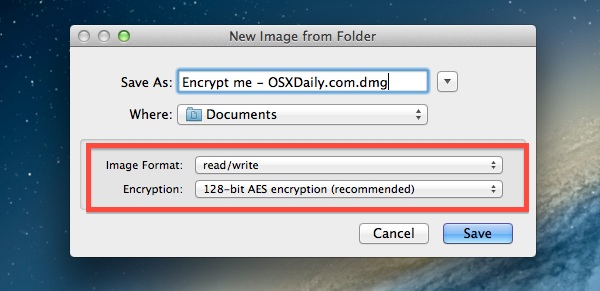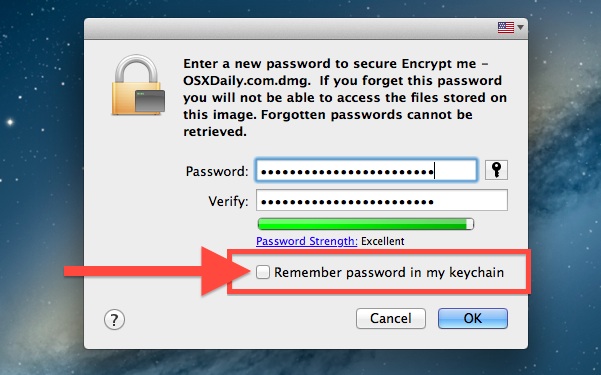
Encrypting folders and requiring passwords for access is an excellent way to store and protect private data on a Mac. Now, there is a new means of password protecting folders and sensitive files introduced in OS X with Mountain Lion that lets you create a new encrypted disk image directly from a specified folder. Though you can still create a blank disk image and fill it as you see fit by using the older trick, this new option in Disk Utility is easier to use and extremely quick, making it the preferred method to add a very strong layer of encryption to a folder, securing itself along with all of its contents.
Encrypting a Folder in Mac OS X
This specific “Image from Folder” trick requires OS X 10.8 or later to use:
- Open Disk Utility, found in /Applications/Utilities/
- Pull down the “File” menu and select “New” and then “Disk Image from Folder”
- Navigate to the folder you wish to turn into an encrypted drive and click “Image”
- Set the Image Format to “read/write” and the Encryption to “128-bit AES”
- Choose a strong password (or generate one by pressing the black key icon) and – this is important – uncheck the box saying “Remember password in my keychain”, then click OK



If you do not intend on using the encrypted image as a working folder that you can add and remove documents from, you can choose an Image Format other than “read/write”.
An encrypted disk image will be created based on the folder you specified, it may take a while if the folder is large or your Mac is slow.
Accessing the Encrypted Folder & Contents
After the encryption procedures is finished, you’ll now be able to access and use the encrypted folder. To summarize steps of accessing the encrypted folder and how to properly use it to maintain security:
- Open the encrypted folder image with a double-click, treating it as a normal disk image
- Enter the password used during the initial encryption setup – do NOT check “Remember password”
- Access the encrypted folder and the contents as a mounted virtual disk, you can modify, copy, edit, delete, and add to it
- When finished, close the files and eject the virtual image to re-secure the folder and files and require a password for future access

You will want to locate the encrypted dmg file and store it somewhere accessible enough, since you will be using a double-click to try to mount the folder image in the Finder when it needs usage, and of course you will need the password to access the files. Just as when creating the disk image password, always uncheck the box saying “Remember password in my keychain” or else you will store the password and lose the security benefit of the encrypted image since anyone with access to your user account could open it. This also applies to transferring the encrypted folder image to another Mac.
With a readable and writable encrypted disk image, you can treat it as a normal folder and copy, delete, or move files from the image. Anything brought into the image while mounted will become encrypted automatically under the same protective layer with the same password. When you are finished working with the folder and want it password protected again, simply unmount the disk image. Regaining access again will require the password before it can be mounted and available.
The short video below demonstrates the entire process, in less than a minute you can encrypt a folder with password protection and mount it for access.
Remember, do not forget the password, or else you will lose access to the data stored within the encrypted folder for good. This is important, because the security level of the encryption format is so strong that it’s virtually impossible to break, thus a lost password means lost data.
0 comments:
Post a Comment